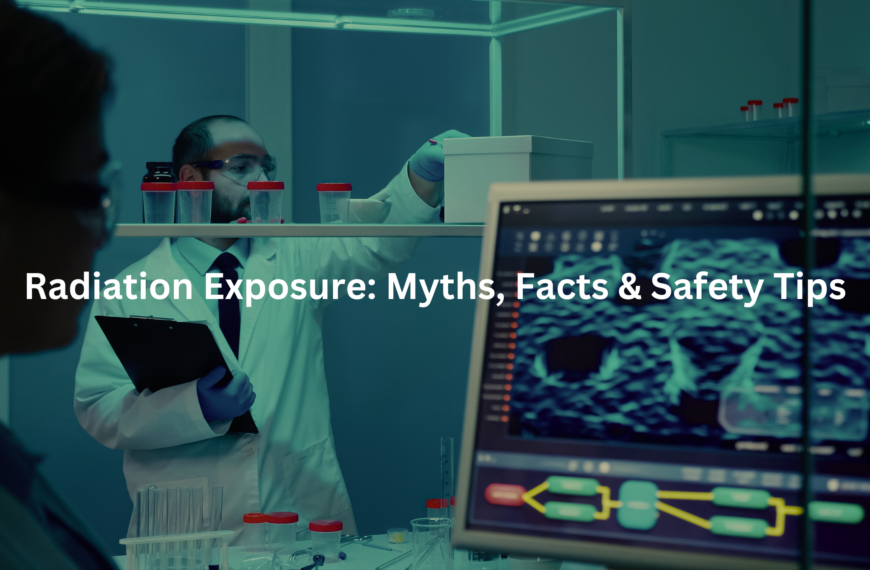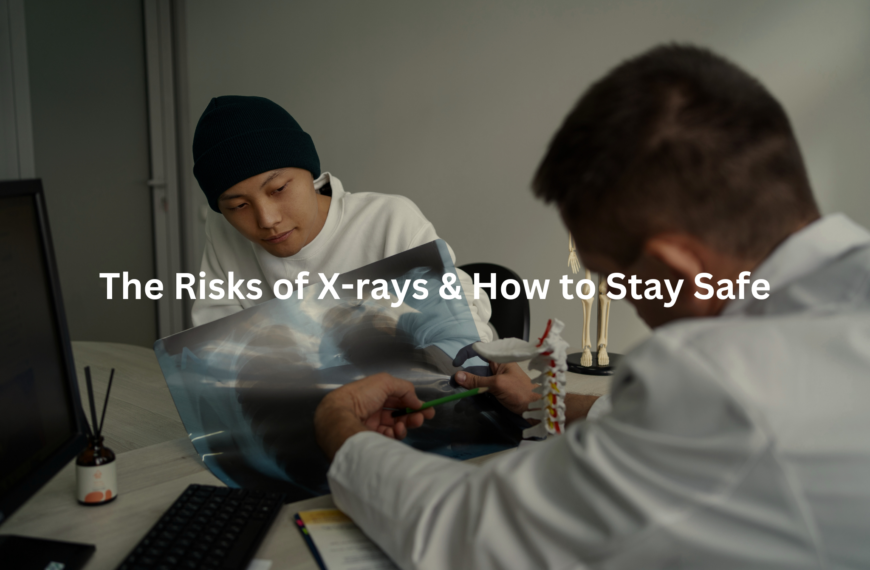Understanding radiation cumulative exposure: key risks, safety measures, and what to consider before your next scan.
Radiation cumulative exposure can sound scary, but it’s important to understand what it really means. Some people mention how many scans could lead to problems later, thinking about the amount of radiation we might get from all these tests. So, what is cumulative exposure, and how does it affect us? Let’s explore this topic and clear up any confusion!
Key Takeaway
- Cumulative radiation exposure is the total amount of radiation received over time from medical tests.
- The risk of radiation-induced cancer is low when safety measures are followed.
- Understanding cumulative exposure helps make informed decisions about medical imaging.
What is Cumulative Radiation Exposure?
Cumulative radiation exposure is the total amount of ionising radiation a person gets from medical imaging over their lifetime. This includes tests like X-rays, CT scans, and nuclear medicine studies. In Australia, medical imaging makes up about 53% of the radiation the average person is exposed to each year.
To put it in perspective, a person might get around 1.7 millisieverts (mSv) from medical scans each year, while natural background radiation adds about 1.5 mSv. These numbers build up over time. While a single scan is usually low-risk, repeated exposure can have a bigger impact.
Tracking radiation dose is especially important for high-dose scans like CTs, which can range from 2–10 mSv per scan. In comparison, a simple chest X-ray is only about 0.1 mSv. That’s why radiologists and medical physicists closely monitor cumulative exposure. They use techniques to lower doses and turn to alternatives like MRI or ultrasound—both of which don’t use radiation—whenever possible to reduce unnecessary exposure. (1)
Why It Matters
Cumulative radiation exposure isn’t just an abstract idea—it affects real people. Some patients face higher risks, especially children and those who need frequent scans due to chronic illnesses. Since children’s bodies are still growing, their tissues are more sensitive to radiation. A dose that’s generally safe for an adult could have a stronger biological effect on a child.
For doctors, ordering an imaging test isn’t just about finding answers—it’s about weighing risks and benefits. A CT scan can be lifesaving for diagnosing conditions like appendicitis or internal bleeding. But if a lower-radiation test can give the same result, it should be considered.
To guide these decisions, radiologists follow evidence-based guidelines:
- Justification: Is the scan necessary for diagnosis?
- Optimisation: Can the lowest possible dose be used?
- Alternative Methods: Can ultrasound or MRI provide the answer instead?
Patients can also take an active role by discussing their imaging history with their doctors and asking if a test is truly needed. (2)
How Cumulative Doses Are Calculated
Radiation doses from medical imaging are measured in millisieverts (mSv). When someone undergoes multiple scans, their total exposure adds up—this is their cumulative dose.
Different imaging tests expose patients to varying amounts of radiation:
- Dental X-ray: ~0.005 mSv
- Chest X-ray: ~0.1 mSv
- Mammogram: ~0.4 mSv
- Head CT scan: ~2 mSv
- Abdomen/Pelvis CT scan: ~10 mSv
- PET-CT scan: Up to 25 mSv
To put this in perspective, natural background radiation in Australia exposes the average person to about 1.5 mSv per year—meaning a single CT scan can deliver several years’ worth of radiation in one test.
Australia’s ARPANSA (Australian Radiation Protection and Nuclear Safety Agency) sets safety guidelines to help manage exposure. They advise healthcare providers to track patient doses, apply dose-lowering techniques, and use imaging only when medically necessary.
The Risks of Cumulative Exposure
One of the biggest concerns with cumulative radiation exposure is the potential link to cancer. While individual imaging tests carry low risks, repeated exposure over time can increase the chance of radiation-induced DNA damage.
Here’s what the research suggests:
- A 10 mSv cumulative dose may cause 1 additional cancer case per 1,000 people exposed.
- A 100 mSv dose raises the estimated cancer risk to 1 in 100.
- There is no known safe threshold—but low doses are generally considered to have minimal risk.
That said, medical imaging is often necessary and can save lives. The key is using it wisely—minimising scans when possible and ensuring each test is justified. (3)
Pediatric Cumulative Exposure
Children are uniquely vulnerable to radiation. Their cells divide more rapidly, meaning DNA damage from radiation has a greater chance of leading to long-term effects. Additionally, they have longer lifespans, giving radiation-related changes more time to develop into disease.
For example, children with congenital heart disease may undergo dozens of imaging studies over their lifetime, including fluoroscopy, CT, and nuclear medicine scans. Research shows:
- The median cumulative dose for paediatric patients is about 8.3 mSv over five years.
- Some children exceed 20 mSv, depending on the number of scans required.
Parents should always ask:
- Is this scan necessary right now?
- Are there radiation-free alternatives (MRI/ultrasound)?
- Can the dose be reduced for a child?
Paediatric imaging centres use size-specific protocols to lower radiation exposure. Shielding, dose adjustments, and limiting repeat scans all help keep children’s doses as low as possible.
Monitoring Cumulative Radiation Doses
Credit: nabil ebraheim
Australia has systems in place to help track and minimise radiation exposure. The My Health Record system allows doctors to see a patient’s past imaging history, helping prevent unnecessary repeat scans.
Hospitals and imaging centres also follow the ALARA principle (“As Low As Reasonably Achievable”), which means:
- Optimising scanner settings to use the lowest dose possible.
- Using lead shielding where appropriate.
- Preferring non-radiation alternatives when suitable.
For patients, keeping a personal record of past imaging tests can be helpful—especially if they see multiple doctors.
Safety Practices in Medical Imaging
Radiation safety doesn’t just happen—it requires active management by radiologists, medical physicists, and imaging technologists. Every imaging centre has strict protocols to ensure doses stay within safe limits.
Key safety strategies include:
- Tailored scan settings (e.g., adjusting CT scanner power based on body size).
- Image reconstruction techniques to improve quality with less radiation.
- Routine equipment testing to prevent excessive radiation doses.
Medical physicists work behind the scenes, calibrating machines and ensuring compliance with ARPANSA dose limits. These specialists play a vital role in patient safety.
Technological Advancements
New imaging technologies are making it possible to reduce radiation doses while maintaining high-quality images. For instance:
- Iterative reconstruction algorithms can lower CT doses by up to 40%.
- Spectral CT scans provide clearer images with less radiation.
- AI-based dose optimisation is helping fine-tune radiation delivery in real time.
As technology advances, imaging is becoming safer and more efficient.
Understanding Background Radiation Levels
It’s easy to worry about medical radiation, but it helps to put it in perspective. Everyone is exposed to natural background radiation every day. Sources include:
- Cosmic rays from space (higher at high altitudes).
- Radon gas in the soil (varies by location).
- Bananas and other foods (contain tiny amounts of radioactive potassium).
In Australia, natural background exposure averages 1.5 mSv per year. For comparison, a chest X-ray gives about 1/15th of that, while a CT scan can equal several years’ worth.
Practical Advice for Patients
Patients can take steps to manage their radiation exposure:
- Ask questions. Always discuss the necessity of a scan with your doctor.
- Keep track of past imaging. This helps avoid unnecessary repeat tests.
- Know your alternatives. MRI and ultrasound can often be used instead of CT.
- Trust medical professionals. Radiologists and physicists work hard to keep doses as low as possible.
Understanding how radiation works can help ease concerns while ensuring safe, effective imaging. (4)
FAQ
What is radiation cumulative exposure, and why does it matter?
Radiation cumulative exposure refers to the total amount of ionizing radiation a person receives over time from medical imaging, such as X-rays and CT scans. Tracking cumulative radiation dose helps assess potential long-term health effects of radiation, including the risk of radiation-induced cancer.
While individual scans may have minimal risks, repeat imaging studies can add up. Understanding cumulative exposure risks allows healthcare providers to follow radiation safety practices and apply cumulative exposure guidelines to minimise unnecessary scans while still ensuring accurate diagnoses.
How is cumulative radiation dose calculated in medical imaging?
Cumulative radiation dose is determined by adding up the effective dose from each imaging test a patient has received. Radiation dose calculations consider factors like scan type, body region, and patient size. Medical physicists use dose-response relationships and cumulative dose assessment techniques to estimate lifetime exposure.
Background radiation levels are also factored in when comparing medical imaging radiation to everyday exposure. Radiation dose monitoring tools help track patient exposure over time, ensuring that cumulative dose limits are not exceeded unnecessarily.
Does a CT scan radiation dose significantly increase lifetime cancer risk?
CT scan radiation dose varies depending on the type of scan and the body part being imaged. While a single scan has a small impact on lifetime cancer risk, multiple scans over time contribute to cumulative exposure from procedures. Cancer risk models suggest that higher cumulative effective dose levels may slightly increase the risk of radiation-induced cancer.
However, the benefits of diagnostic imaging radiation often outweigh potential risks. Individualized risk assessment, particularly for children, helps balance the need for imaging with the goal of minimising unnecessary exposure.
How does pediatric cumulative exposure compare to adult exposure risks?
Children are more sensitive to ionizing radiation effects due to their developing tissues and longer life expectancy. Pediatric cumulative exposure can accumulate faster with repeat imaging studies, increasing cumulative exposure risks. To reduce unnecessary exposure, medical imaging protocols are adjusted for children, using lower radiation doses where possible.
Cumulative exposure guidelines recommend alternative imaging methods like ultrasound or MRI when feasible. Radiation protection measures, such as adjusting CT scan radiation dose for smaller bodies, help lower long-term health effects of radiation in paediatric patients.
How can patients track their radiation exposure history?
Patients can keep a record of their radiation exposure history by noting past scans, including the type of test and approximate radiation dose. Some healthcare systems use patient exposure tracking tools to monitor cumulative exposure from multiple scans. Awareness of cumulative radiation effects allows patients to discuss imaging frequency and risk with their doctors.
Medical physicists and radiologists follow radiation safety practices to ensure imaging is medically necessary. If concerned about cumulative effective dose, patients can ask about cumulative dose assessment and alternative imaging options.
What are the risks of emergency department imaging?
Emergency department imaging often relies on rapid diagnostic tools like CT scans, which can lead to increased cumulative exposure from procedures. While immediate imaging can be lifesaving, repeated scans contribute to cumulative radiation dose. Risk-benefit analysis in imaging is essential to determine when a scan is necessary.
Radiation dose monitoring and adherence to medical imaging protocols help reduce unnecessary scans. Patients should be aware of cumulative exposure risks, particularly if they frequently visit the emergency department for conditions requiring diagnostic imaging radiation.
How do medical physicists help with radiation safety?
Medical physicists play a critical role in radiation protection measures by ensuring imaging systems use the lowest possible radiation dose while maintaining diagnostic accuracy. They oversee effective dose measurement, radiation dose calculations, and dose-response relationship studies to optimise imaging safety. Their work includes monitoring cumulative doses in patients and advising on individualized risk assessment.
By implementing technological advancements in imaging, medical physicists contribute to safer diagnostic imaging radiation practices and help limit cumulative exposure from multiple scans over a patient’s lifetime.
How does natural background radiation exposure compare to medical imaging?
Natural background radiation exposure comes from cosmic rays, soil, and everyday materials. In Australia, the average person receives about 1.5 mSv per year from natural sources. By comparison, a CT scan radiation dose can range from 2 to 10 mSv, adding to cumulative exposure risks.
While medical imaging protocols aim to keep radiation low, cumulative dose limits help prevent unnecessary exposure. Risk communication strategies educate patients on balancing medical imaging benefits with the potential long-term health effects of radiation from repeated diagnostic tests.
What strategies help reduce cumulative exposure from multiple scans?
Radiologists follow strict medical imaging protocols to minimise radiation exposure. Radiation safety practices include using lower-dose techniques, reducing imaging frequency, and preferring non-radiation alternatives like MRI or ultrasound when appropriate. Patient education on radiation safety encourages informed decisions about imaging needs.
Awareness of cumulative radiation effects helps healthcare providers apply cumulative exposure guidelines, ensuring the lowest necessary dose is used. Advances in radiation dose monitoring and technological advancements in imaging continue to improve patient safety while maintaining diagnostic accuracy.
Conclusion
Radiation cumulative exposure is something everyone should be aware of. Understanding how it works and the safety measures in place helps people make informed choices about medical imaging.
Talking to healthcare providers and keeping track of past scans can help manage exposure and ensure safer care. The more we know, the better we can balance the benefits of imaging with the risks. Staying informed is the best way to protect ourselves while still getting the medical tests we need.
References
- https://pubmed.ncbi.nlm.nih.gov/27084545/
- https://www.nature.com/articles/srep35181
- https://intermountainhealthcare.org/ckr-ext/Dcmnt?ncid=521548897
- https://link.springer.com/article/10.1007/s00330-020-06800-1



